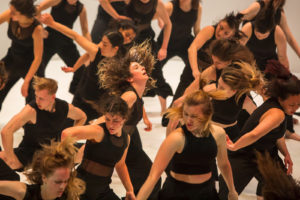Colossus on Tour: Stephanie Lake’s runaway success - Vancouver Ballet Society
- Home
- Features 2020 - 2023
- Colossus on Tour: Stephanie Lake’s runaway success

By Deborah Jones
Stephanie Lake named Colossus well. Not only is it a work for vast forces, it has made an out-sized difference to the Australian choreographer’s life. After Colossus is seen in Canada — it’s in Montreal March 8-11 and Toronto March 22-26 — it will have touched down on four continents: Australia, Europe, Asia, and North America. With Buenos Aires coming up in June, you can add South America. Africa comes next year, with performances in Pretoria.
“I’ve been kicked upstairs,” Lake says cheerfully of her post-Colossus international standing. When it premiered in 2018, she was by no means unknown or unregarded as a choreographer — far from it, as invitations to create for the likes of Sydney Dance Company and Queensland Ballet proved. Her own Stephanie Lake Company, founded in 2014 in Melbourne, has plenty of awards to its credit. Colossus, though, took Lake to a whole new level.
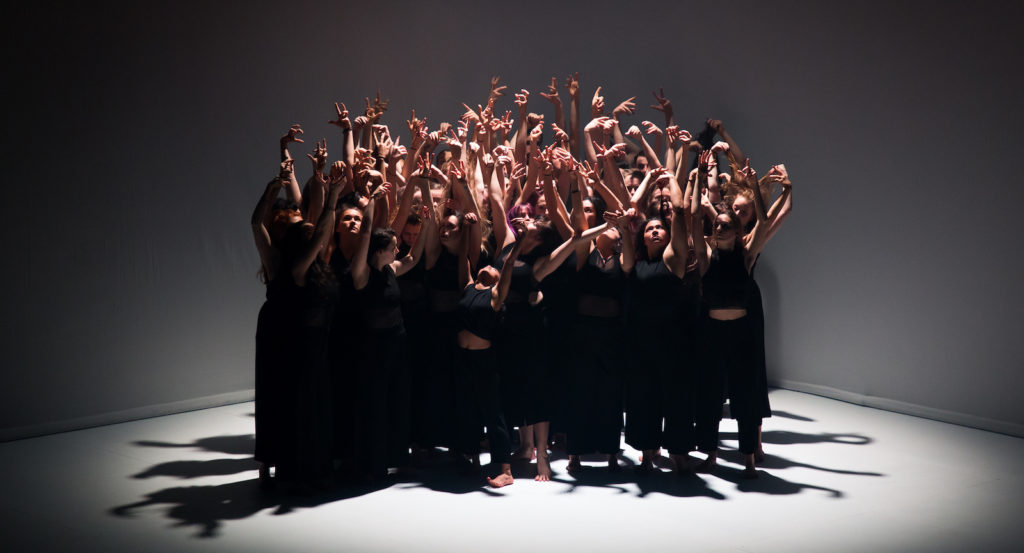
A life in contemporary dance can be a hand-to-mouth existence, even with commissions, philanthropy, and project funding. Lake talks about the difficulties of maintaining a career — “a lot of it, to be honest, has been a real slog” — but her warm, pragmatic nature has seen her prevail. Plus, of course, the fact she makes dances that audiences respond to. They are intellectually stimulating without being dry, virtuosic without showing off. The music, much of it composed by her life partner Robin Fox, digs deep into the bodies of the audience as much as it drives the dancers. The movement is complex, surprising, and often tremendously exciting while remaining utterly human.
But, after 20-plus years as a dancer and choreographer, Lake was chafing at the bit. She’d made a lot of dances for relatively small forces that fitted the easy-to-tour mould. “I thought, bloody hell, that’s not what I want to do. I want to do the opposite.” And not just for herself. A big piece would mean work for more dancers. That was Colossus. When it premiered at the 2018 Melbourne Fringe Festival there were 44 in the cast. In Toronto there are 45 and in Montreal 64, the largest number to date.
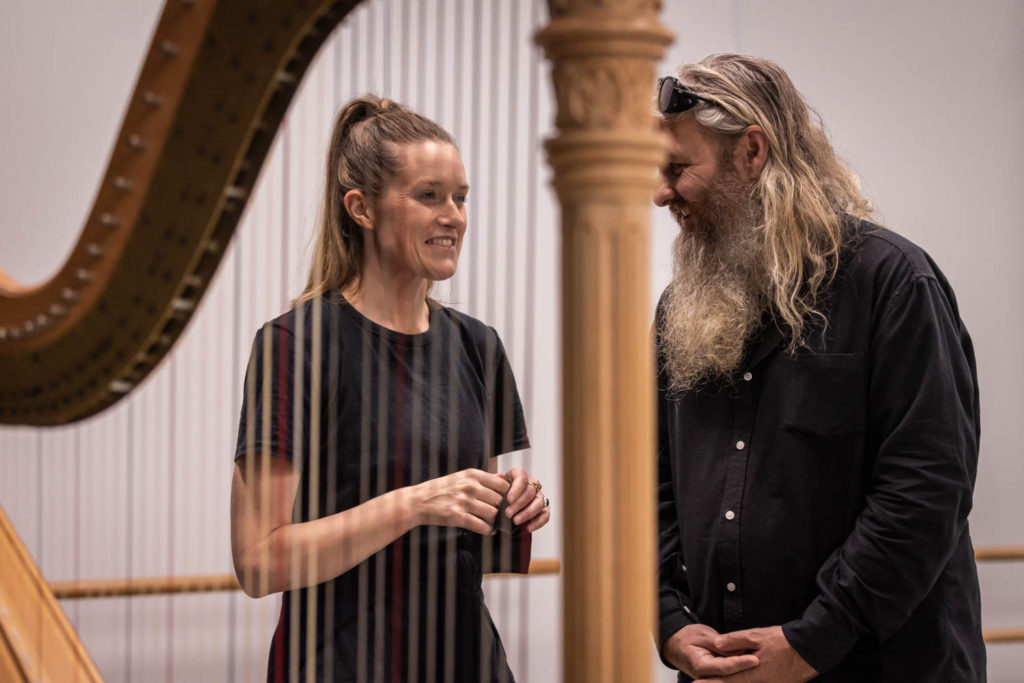
Colossus is always cast locally, danced by students who are on the cusp of professional careers. That accounts for the variable numbers, not to mention making it affordable to tour. Crucially, the decision is part of the meaning of the piece. “It’s a big, collaborative community project,” says Lake. “The spirit of the show is very inclusive and non-hierarchical.”
In retrospect, it’s obvious Lake was destined to break the mould. She was born in Saskatoon, Saskatchewan, to a Canadian father and Scottish mother but grew up on the other side of the world in the small city of Launceston, Tasmania. Her adventurous parents, Lake says, wanted to live somewhere warmer.
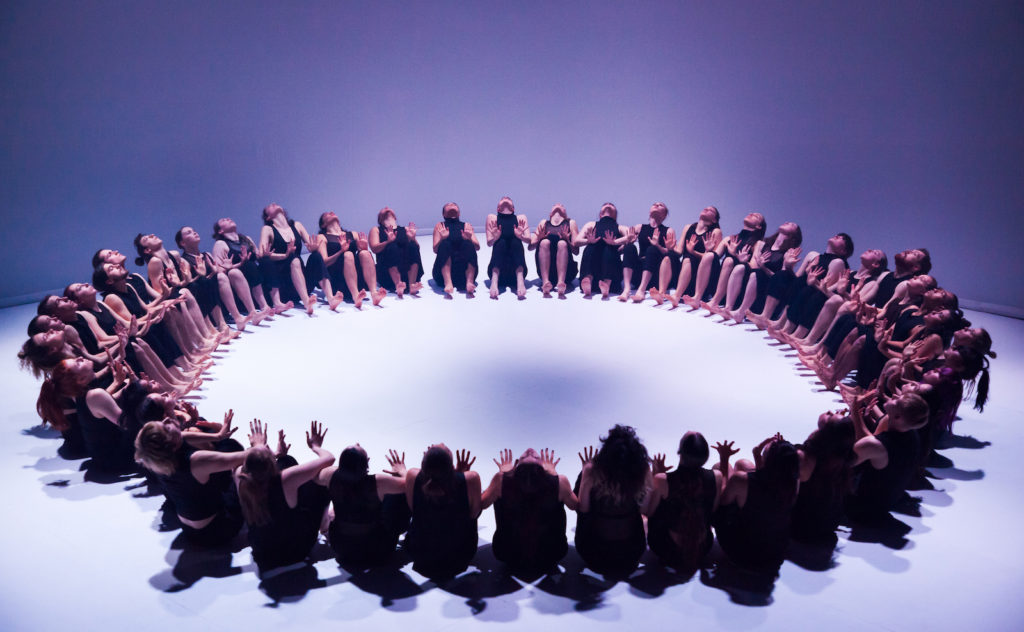
Launceston has a temperate climate and, as Lake discovered in her teens, was home to a youth dance company called Stompin. It was “the coolest thing in town” and a hugely important influence. Stompin’s founder Jerril Rechter empowered her young students, encouraging creativity and non-competitiveness. “It taught me to think outside the box.”
After leaving school, she travelled for a few years, then did a loose form of apprenticeship with Launceston-based professional company Tasdance. Moving to Melbourne to study dance at the Victorian College of the Arts, she was by then older than her cohort, most of whom had been training for much longer.
Lake managed to graduate, just. The pointe shoe, to which she came very late, was not her friend but she was good at contemporary work and displayed a gift for choreography. She put on student shows and was snapped up as a performer by Melbourne luminaries Lucy Guerin, Gideon Obarzanek, and Phillip Adams. For Lake, dancing and making dances “were always braided together. There was actually no distinction. Even when I was working professionally as a dancer, I was always choreographing, making short works, commissions, putting on my own independent work.”
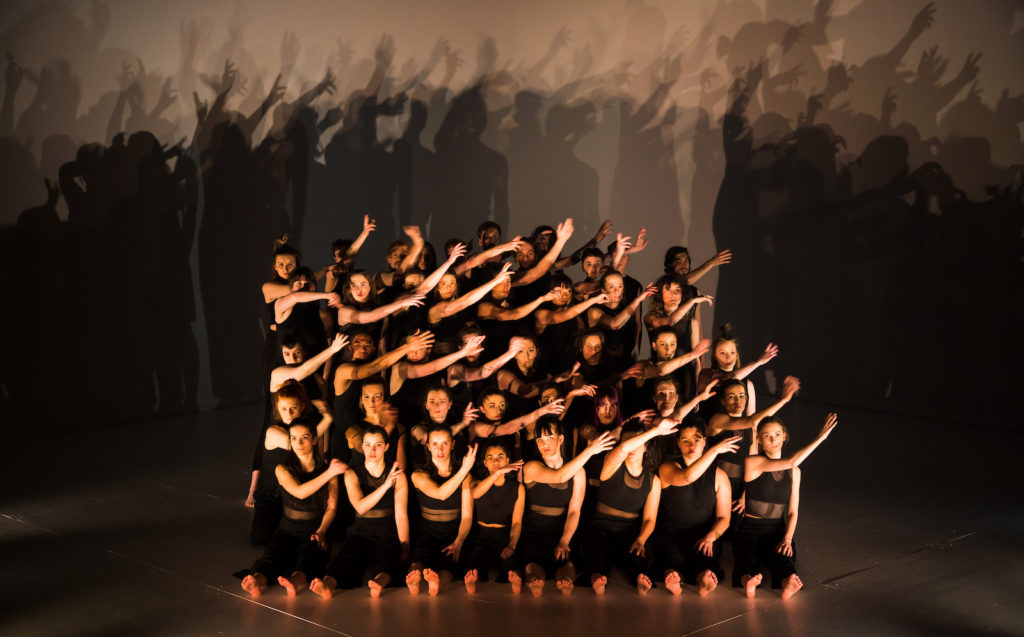
There was a hiatus of a couple of years when Lake’s two daughters were young, but she hadn’t been forgotten. Obarzanek’s Chunky Move company’s 2010 commission, Mix Tape, brought Lake awards and attention. Two pieces in 2013, DUAL and A Small Prometheus, also made a splash. DUAL (two dancers, easy to tour) was seen at five European arts festivals, and asked “questions about individuality and what is sacrificed as well as heightened by a union.” A Small Prometheus, for five dancers, was about unpredictability and unstable states, “from co-operative to menacing, chaotic to ordered, individualistic to unified.” The two works grew from Lake’s fascination with the relationship between the individual and the group for both good and bad. “I can’t explain why, but when I get performers together that’s what we end up exploring a lot of the time in the creation phases.”
Those ideas are in Colossus, writ large. It’s a mind-boggling feat of living architecture as a horde of black-clad bodies explodes into action, sometimes battling for control, sometimes excluding individuals, sometimes existing in harmony, always exhilarating.
Lake got her chance to make it when a program supported by Arts Centre Melbourne and the Melbourne Fringe offered some development money and a guaranteed season. She knew lots of dancers, called them in, and made “a clever, frugal work.” She had few expectations, but Colossus was quickly picked up by other Australian festivals. International invitations followed. In 2021, Paris’ Théâtre National de Chaillot insisted on having it, even though the choreography had to be taught via Zoom due to the pandemic. The same thing happened last year for performances at Taipei International Festival of the Arts (56 dancers) but the Colossus magic held.
The show’s dream run has made Lake busier than ever. She recently made new works for Sydney Dance Company and Queensland Ballet and there’s an important, hush hush for now, ballet commission next year. The latest Stephanie Lake Company work, Manifesto, features nine dancers and nine onstage drummers making a joyful noise in a celebration of bodies and the beat. It was co-commissioned by all of Australia’s major arts festivals and there are plans to tour internationally.
When the Canadians are added to the total, about 600 dancers across the globe will have had the Colossus experience in 13 different seasons and there is no end in sight. “It’s a blossoming every time it’s staged,” says Lake. “It’s like a miracle every time.”
